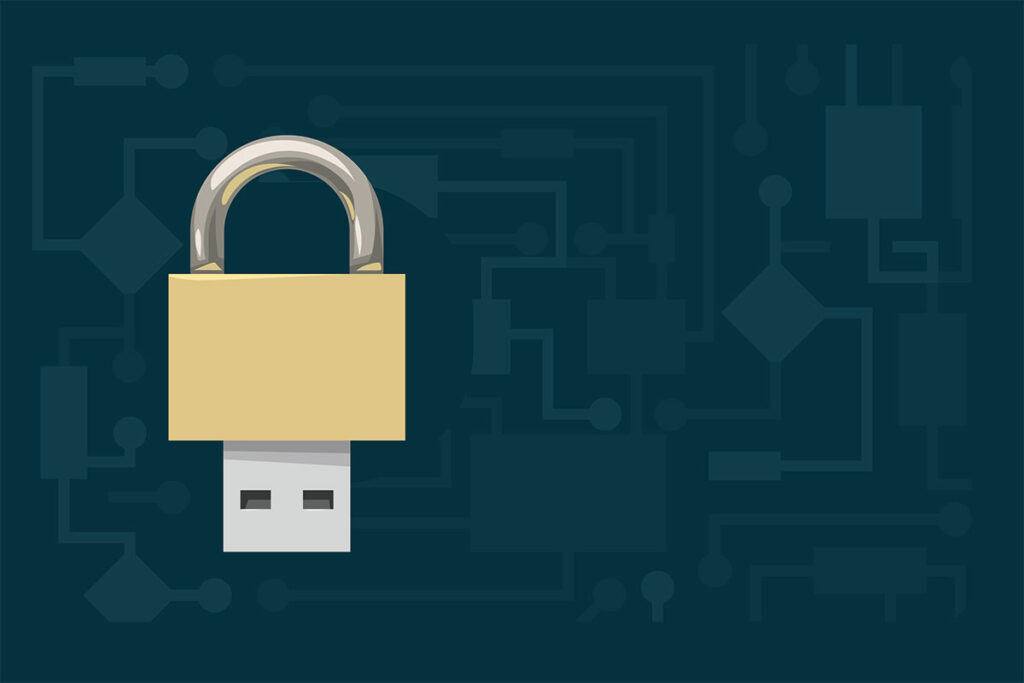How to Protect Your AV Equipment from Cybersecurity Threats

In the digital era, protecting your business from cyber-attacks is as important as ensuring its physical security. As AV technology becomes increasingly sophisticated, it also becomes more vulnerable to cyber threats.
This article will discuss the importance of keeping your AV setup secure from cyber threats and the ways of mitigating them.
Why It’s Important to Protect AV Equipment from Cyber Threats
A successful cyber-attack can cost you dearly, and we’re not only talking money here. Here are just a few reasons why you should care about the cyber security of your AV system.
Money: Repairing breaches, data recovery, and upgrading security measures can be expensive. And it gets even worse if customer data is compromised.
Confidential information: AV systems often handle sensitive information, including confidential business discussions and personal data. A breach could lead to critical data loss or theft.
Operational integrity: Many businesses simply cannot operate without a working AV system. A successful cyber-attack can disrupt your work for days, if not weeks.
Reputational damage: A breach can erode customer trust and potentially lead to loss of business.
Legal and compliance: A cybersecurity incident can bring your business under scrutiny and result in non-compliance and legal penalties.
So, how do you mitigate all those risks? The next part gives the answer.
Means of Protection with AV
The problem of cybersecurity is complex. Some experts name as many as 7 layers of protection that ensure maximum defense level from cyber threats.
But for the sake of brevity and clarity (and your budget, of course), we will cover only three absolutely crucial aspects: physical, software, and human.
Physical Layer
If someone can just walk in and simply stick a thumb drive into your digital signage screen, you may be in trouble.
In the best case, it may play some tasteless prank videos. At worst, it may contain a virus quickly spreading through your network and causing serious damage while stealing sensitive data.
Here are a few steps you can take to prevent it.
- Keep critical equipment under lock and key. For instance, in a conference room where sensitive meetings occur, use key card access systems to restrict entry to authorized personnel only.
- Use tamper-evident seals to quickly identify if a device has been physically accessed or altered.
- Securely mount devices and use lockable enclosures to prevent unauthorized access to ports and cables.
- Employ port locks on unused USB or HDMI ports to prevent unauthorized devices from being connected. Use cables with locking connectors for critical connections to ensure they cannot be easily unplugged or intercepted.
Software Layer
This aspect includes your network security and software means to prevent cyber-attacks. This is critical for systems that rely on Wi-Fi or LAN connectivity to transmit AV data.
Make sure you take the following safety measures:
- Embrace regular software and firmware updates for all your equipment. Patches are often released to fix security vulnerabilities.
- Implement firewalls and antivirus software. Modern solutions can provide solid protection from the most common types of attacks.
- Secure wireless networks by using advanced security protocols, such as WPA3, and regularly change Wi-Fi passwords. Consider using a separate network for guest access.
Human Layer
Social engineering is not just a buzzword. Companies lose millions of dollars due to successful attacks that deceive employees into sharing sensitive data.
Here are the ways to prevent it:
- Run regular training sessions educating staff about social engineering tactics. They will help employees recognize and respond appropriately to potential threats.
- Establish clear policies regarding information sharing and access and ensure everyone understands their role in keeping your business safe.
- Foster an organizational culture where security is prioritized and encourage employees to report suspicious activities.
Cybersecurity Audits
The goal of cybersecurity measures is to minimize the attack surface, i.e. the number of points which a perpetrator may use to access your network.
It’s a constant process, and to ensure you’re doing it right, you will need to run regular audits and check the integrity of your defense lines. This may seem like a daunting task, but in the end, it will save you time and money.
If you have any questions regarding the cybersecurity of your AV equipment, our experts are ready to help. Call us, and let’s talk!

